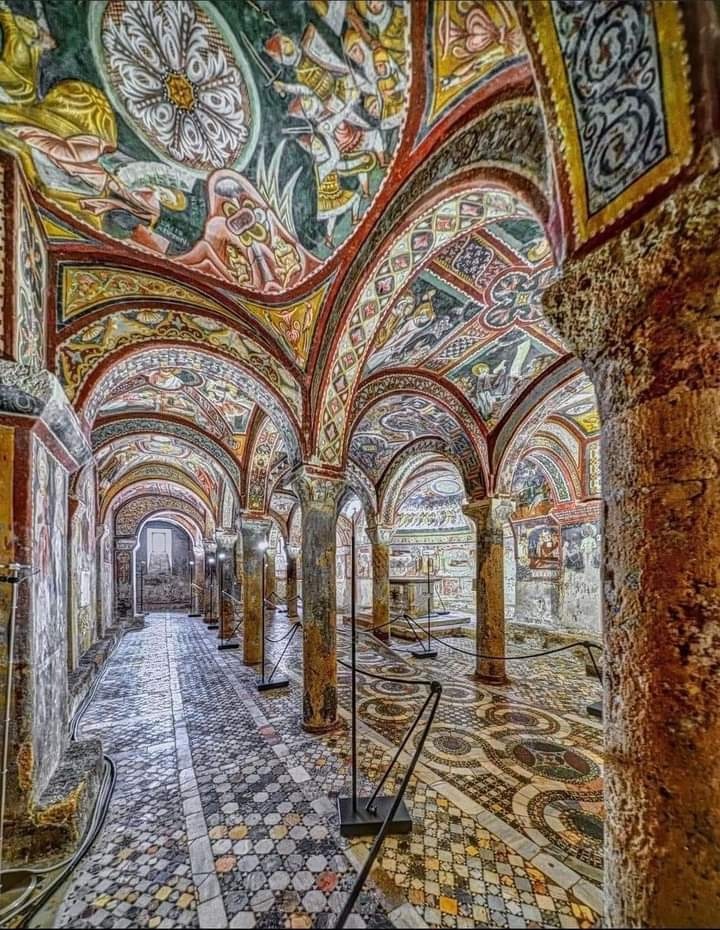Introduction
The Crypt of San Magno, located beneath the historic Anagni Cathedral, is a remarkable treasure of medieval religious art. Situated in the charming town of Anagni, often referred to as the “City of Popes,” this crypt showcases the artistic and spiritual legacy of the 13th century. Anagni, a town steeped in history, is celebrated for its pivotal role in ecclesiastical affairs, having produced four Popes and played host to significant events in medieval Europe.

Architectural and Artistic Significance
Location and Historical Context
Nestled under the Romanesque cathedral of Anagni, which was constructed between the 11th and 12th centuries, the crypt spans over 500 square meters. It serves as both a place of worship and an artistic marvel, reflecting the religious fervor and creativity of its time. The cathedral above the crypt is itself a masterpiece, but it is the hidden treasure below that captivates scholars and visitors alike.

Artistry of the Crypt
The walls of the crypt are adorned with intricate frescoes created by three anonymous artists, collectively known as the “Masters of Anagni.” These frescoes form a cohesive narrative that depicts the journey of human salvation, starting from creation and culminating in apocalyptic visions of the end of time. In addition to biblical themes, the frescoes also celebrate the lives of local saints and martyrs, emphasizing their enduring spiritual significance to the region.

The use of vibrant colors and detailed imagery showcases the mastery of medieval artisans. The crypt’s frescoes are considered one of the finest examples of medieval religious art in Italy, blending theological depth with artistic sophistication.
Cultural and Religious Impact
Symbolism of the Frescoes
The fresco cycles are not only visually stunning but also deeply symbolic. They illustrate theological concepts central to medieval Christianity, such as redemption, divine judgment, and the triumph of good over evil. The presence of local saints and martyrs reflects the intertwining of universal Christian themes with regional devotion, offering a glimpse into the religious life of 13th-century Italy.

Preservation and Legacy
The crypt has been remarkably well-preserved, allowing modern visitors to experience the spiritual and artistic grandeur of medieval Italy. It stands as a testament to the enduring legacy of the Masters of Anagni and the cultural richness of the town. Scholars and art enthusiasts continue to study its frescoes for insights into medieval religious practices, iconography, and artistry.

Conclusion
The Crypt of San Magno is more than just a historical site; it is a vibrant tapestry of faith, art, and history. Its frescoes, created by the enigmatic Masters of Anagni, narrate a timeless story of human salvation and spiritual devotion. For anyone interested in medieval art, theology, or history, the crypt offers an unparalleled journey into the heart of 13th-century Italy, hidden beneath the beautiful Anagni Cathedral.

